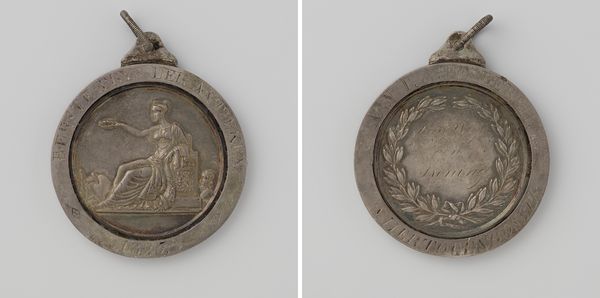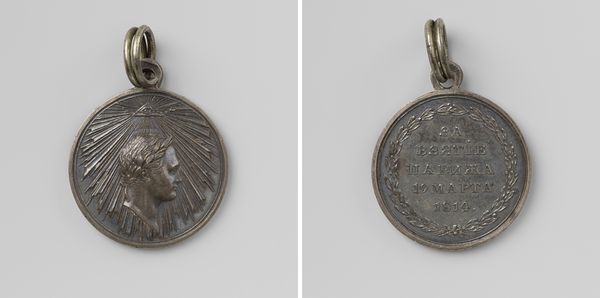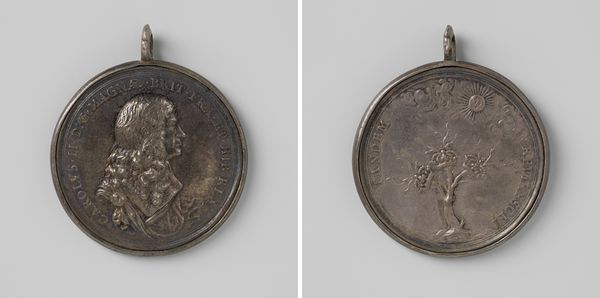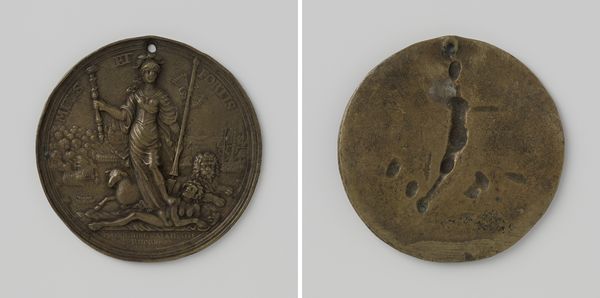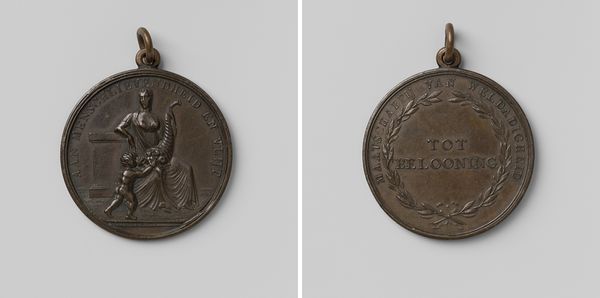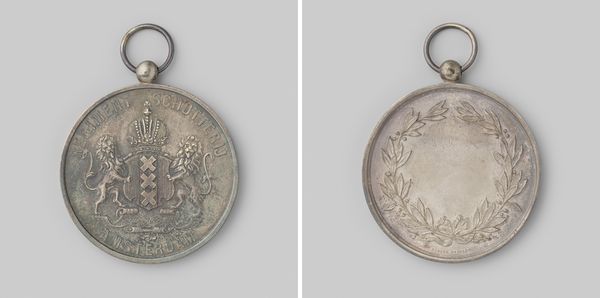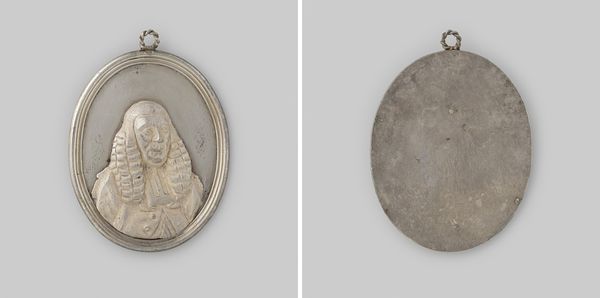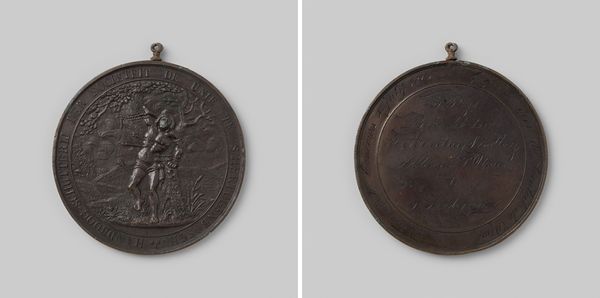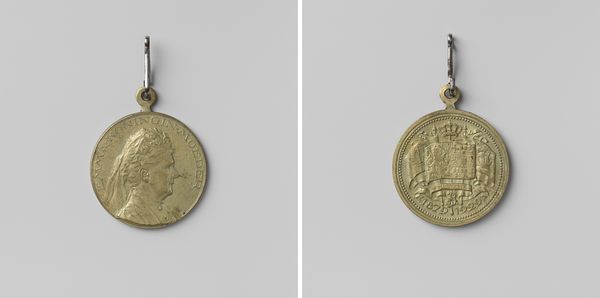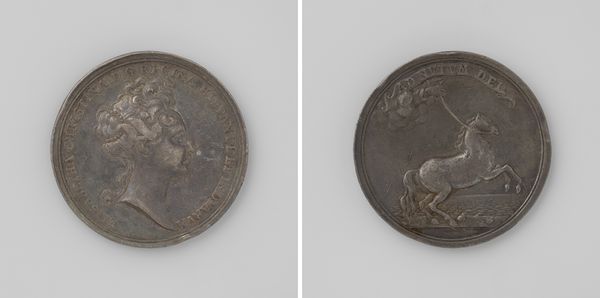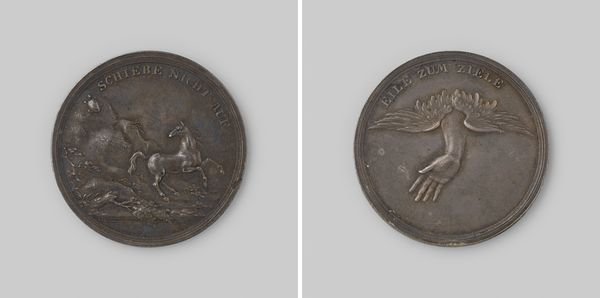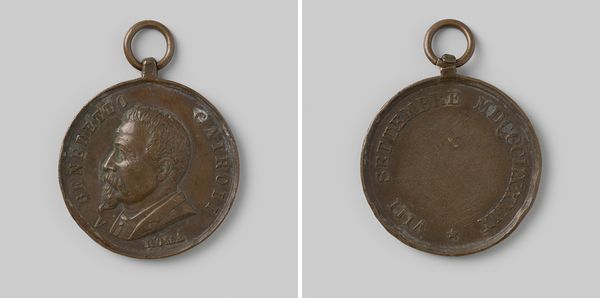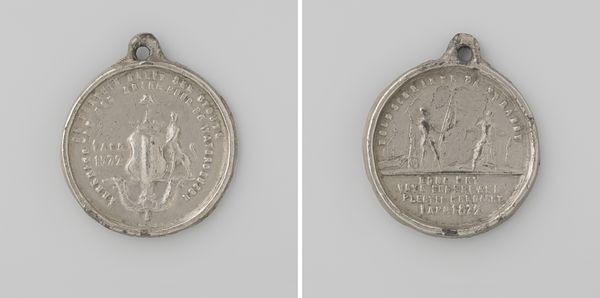
metal, engraving
#
portrait
#
medal
#
baroque
#
metal
#
history-painting
#
engraving
Dimensions: diameter 4.9 cm, diameter 4.3 cm, weight 47.25 gr
Copyright: Rijks Museum: Open Domain
Editor: This metal engraving from 1654 commemorates "The Conversion of Christina of Sweden to the Roman Catholic Church," currently held at the Rijksmuseum. The coin-like form makes it feel very personal, yet it depicts a grand historical moment. What are your initial thoughts when looking at this artwork? Curator: Well, beyond the immediate representation of a significant conversion, I consider how such an object functioned within the context of religious and political power. This medal, likely commissioned, serves as propaganda, an object manufactured to shape public perception of Christina's controversial decision. How was this narrative being circulated? Editor: That’s interesting! So, not just a historical record, but actively shaping the story? Curator: Precisely. The choice of metal, the engraving style--each decision aimed to legitimize her conversion and present it as a triumph, both spiritually and politically. The question is, for whom? Was this aimed at convincing Catholics, silencing Protestants, or simply solidifying Christina's own self-image? Who was intended to view, hold, or own such a medal? Editor: It is a rather small piece, meant to be worn maybe? Did wearing such objects have some historical impact or significance? Curator: Its size indeed suggests a personal connection. Think about how these medals were distributed, received, and worn. These objects served not merely as representations of the conversion, but also as extensions of power relations. What would possessing and displaying such an object signify about the wearer’s social standing and allegiance? Editor: I guess seeing it just as art, you miss so many of the power dynamics involved in making and circulating an image like that. Curator: Exactly. It’s crucial to unpack the visual strategies and socio-political agendas embedded in what seems like a simple commemorative piece. These objects offer incredible insight into the way narratives were constructed and disseminated in the 17th century. Editor: Thanks, that has definitely opened my eyes to a lot of unseen layers to the piece.
Comments
No comments
Be the first to comment and join the conversation on the ultimate creative platform.
